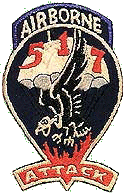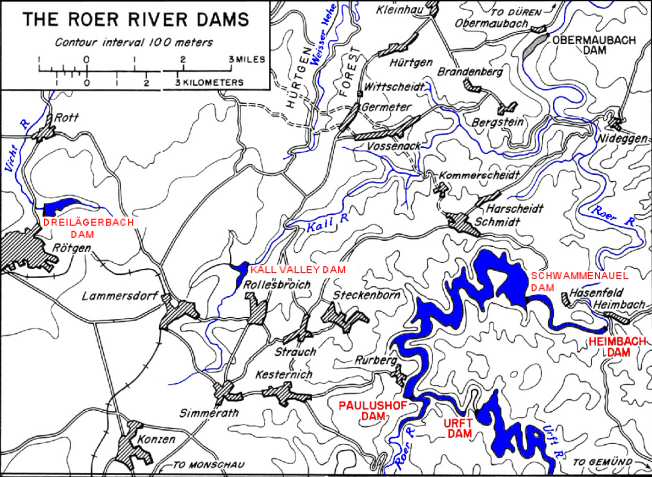INFANTRY REGIMENTAL COMBAT TEAM (SEPARATE)
IN THE VICINITY OF BERGSTEIN, GERMANY
4-8 FEBRUARY 1945. (RHINELAND CAMPAIGN)

By Capt. Roland L. Gohmert
FIRST ARMY PLANS
By the end of January 1945, the German withdrawal from the Ardennes was in its final stages and V Corps was once again concerned with the Roer Dam problems. On 4 February, First Army issued a Letter of Instructions assigning the 517th to operational control of V Corps and in turn to the 78th Infantry Division. The letter further stated that as soon as XVIII Airborne Corps could be relieved from its present sector, it would take over a new sector on the left of V Corps, with its right boundary at the junction of the Kall and Roer Rivers, thus relieving the 8th Division and VII Corps of part of their responsibility. When XVIII Corps became operational in the new zone, the 517th along with the 78th Division would come under its control.

It was decided that the 517th would make a diversionary attack through the 8th Division, in the vicinity of Bergstein, not later than 5 February, while the 78th Division made the main effort through Schmidt to the dam. The diversionary attack was planned for two reasons: (a) to prevent reinforcements from moving in to intercept the main effort, and (b) it was thought that by using parachute troops in the 8th Division sector the enemy would think the Airborne Corps in its entirety was present and that the main effort was being made north of Dam No. 2. (15) The foregoing facts, however, were not known to the combat team commander until after the action, so from this point only those facts and situations actually known at the time will be discussed.
On 3 February 1945, at the time control of the 517th passed to V Corps, the combat team was attached to the 82nd Airborne Division which was making an attack east of St. Vith, Belgium. (16) Early on 4 February, the 517th received orders that the combat team was to proceed to the V Corps area. The commanding officer with staff members and battalion commanders moved out to V Corps Headquarters at Eupen. The regimental executive officer was left to await transportation and to move the combat team by truck later in the day. At V Corps Headquarters the combat team commander was given the mission of attacking out of Bergstein the following day to seize the high ground northeast of Schmidt. From there he was guided to the 78th Division Headquarters where the general situation was presented. In the meantime, the combat team was entrucked, late in the afternoon, and was proceeding to Eupen. A guide had been sent back to intercept the convoy and direct it to Kleinhau. (17)
From the 78th Headquarters, the command and staff party went to Brandenberg, where a meeting with the commanding officer of the 113th Infantry, 8th Division, had been arranged. One battalion of the 113th occupied Bergstein, which was to be the line of departure for the attack. The current situation was presented, and necessary coordinating details were worked out. (18)
At approximately 050330 February, the 517th convoy reached the detrucking point at Kleinhau. The tired, hungry, half frozen troopers of the 3rd Battalion climbed down in a freezing rain to the muddy road and were guided to an assembly area between Kleinhau and Brandenberg. As they were moving along the road, a violent fire fight broke out a short distance to their left, and a number of illuminating flares allowed the troops their first glimpse of the area. What they saw can best be described as a Hollywood version of "No Mans Land". At the assembly area the troops were deployed among knocked out German bunkers which, although filled with water, provided the only shelter in the area. Needless to say, little of the much needed rest was gotten that night. The battalion CP was set up in the cellar of a destroyed farmhouse, and communications were quickly established with the regimental CP at Brandenberg. (19)

